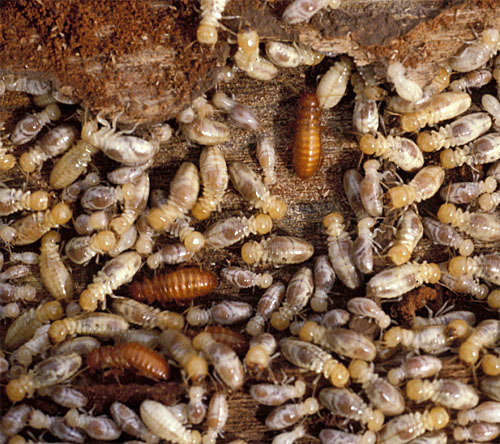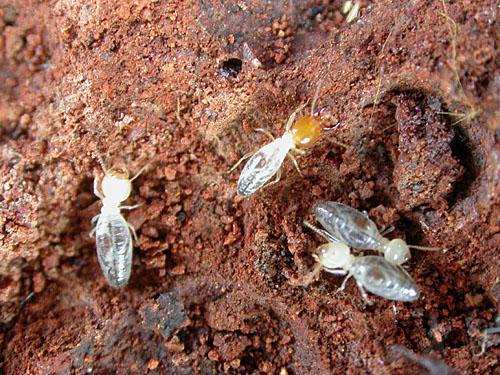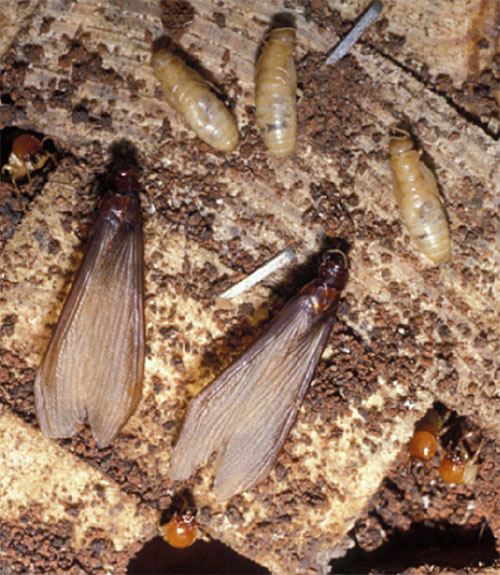Good termites and bad termites
Michael Neal, Senior Technical Officer, Darwin
Termites live in complex, highly organised social groups inside nests which are either above or below the ground. These nests can be free standing mounds or inside a tree. Each colony consists of several casts: A king, queen (or in some species more than one queen), soldiers who protect the colony and workers whose job is to maintain the nest and collect food to feed the young, soldiers and the reproductives. Colony size depending on the species can range from a few hundred individuals up into the millions.
The benefits of Termites
There are more than 2,800 species in the world. Of these, Australia has around 263 species and in northern Australia we have close to 140 species. All of these are beneficial to the natural environment as they are responsible for removing fallen tree limbs, leaf litter and some grasses from the forest floor. This helps reduce the fuel load for fires. Also, their many foraging galleries in the soil allow nutrients and water to move down through the soil profile, supplying much needed nutrients for our native plants.

Cathedral termite mounds (built by the Nasutitermes species) are a common site across northern Australia
Pest species
The main problem species for industry and in the home garden in the Top End are Mastotermes darwiniensis and Microcerotermes spp. Both of these will feed on live trees. Although Microcerotermes is found building conical shaped mounds up against trees and palms, it is rare for them to kill a mature plant. Mastotermes is a different story, inhabiting the trunks and root crown of trees. There are very few plant species that they won’t attack and in most cases, if not managed, inevitably the plant will be severely damaged or die.
Mastotermes alates. These are the primary reproductives that leave the colony on dispersal flights during the early storms to mate and establish new colonies. Only a small number manage to establish a new colony and the rest become an important food source for many birds and reptiles

| 
|
Mastotermes workers and some reproductives | Microtermes workers and soldier |
If you are interested in developing a management strategy for termites on your farm, please contact Senior Technical Officer Michael Neal on (08) 8999 2326 or michael.neal@nt.gov.au
Give feedback about this page.
Share this page:
URL copied!
